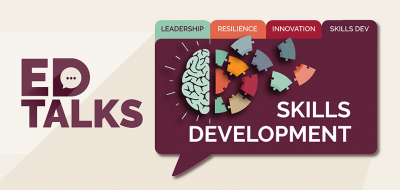Last week, Maria Ramos, Absa Group CEO, proclaimed big plans for the group at Davos. Then, in an unexpected twist, this week, she announced her intention to retire. Her somewhat surprising announcement had an interesting effect on Absa’s share price, which gained 6.1% on the JSE, amounting to its biggest one-day gain in close to 12 months. However, most agree Absa has a tough road ahead.
Ramos’ abrupt departure raises several questions, not least of all around her successor. Wendy Lucas-Bull, Chairperson Absa Group, said it is likely to be 12 months before a successor is ‘anointed and announced’. In the interim, René van Wyk has been appointed to steer the ship. The JSE indicates a positive response to this decision, which is unsurprising given Van Wyk’s impressive resume. Despite this, the prolonged lack of an officially appointed successor could weaken an already-vulnerable Absa.
Following a ‘divorce’ with Barclays PLC, Absa has grand plans as a proverbial ‘comeback kid’. But, executing smart strategies to entrench its position as an independent pan-African services group across Africa will take strong leadership. And, unfortunately, it’s well-known that turmoil at the top has a trickle-down effect.
Why is succession planning important to an organisation?
A 2015 Strategy and Business study suggests that if large companies had planned rather than undergone forced successions, they’d have generated about US$112-billion more in market value in the year before and after their turnover. Unexpected turnovers at the top cost big bucks. However, strong succession planning models can curb these costs.
Dr Chris van der Hoven, CEO at the University of Stellenbosch’s Executive Development division (USB-ED), says that there are big implications to unexpected successions. “It’s quite normal for CEOs to retire, but the impact of this can be seriously lessened through a smart succession plan, plus continuous communication with the internal team.”
How do you develop a succession plan?
A succession plan is the vehicle used by the board and owners to direct their ambitions for the business. It’s vital that it’s in place, with executive education being a key component to ensure its effectiveness.
Here are my insights into how to create an intelligent talent management process to groom emerging leaders with CEO potential:
- Set time aside: Succession planning requires the board to proactively set time aside to formalise its ambition for the leadership of the business. The Human Resource and Remuneration committee (HR & Remco) – a sub-committee of the main board – would be expected to initiate this and make proposals for consideration at the main board. Ideally, the current CEO should be included in the process – assuming there are no conflicts of interest – so as to ensure expectations are managed and a seamless transition is feasible.
- Know what’s needed: The board must have a good sense of its ambition for the business. This means that HR & Remco should be able to propose criteria for inclusion in a CEO (or CxO) selection matrix. For example, since the CEO is typically expected to have the long-term sustainability of the business in mind, any candidate who only talks about near-term issues may be de-selected.
- Develop internal talent: The CEO ‘selection matrix’ could form the basis of a brief for a head-hunter, but succession planning gives the business the chance to develop internal candidates too. A philosophy of ongoing and robust executive development gives the business a chance to link ambition to development and to performance management. This decreases wastage in executive development spend and time, and ensures a broader base of ‘home-grown’ choice for future CEO selection.
- Reduce flight risk: Succession planning is also a key part of successful talent recruitment and should significantly reduce the ‘flight risk’ of executive stars in the business. It is a critical component of the employee brand of the business in the market. Realising that the business will shine a bright light on your development and performance, with a view to succession over time, should be attractive to talented leaders.
- Make a plan: A good succession will also have a well anticipated ramp up and lead time to change skills, behaviours and time allocation for the subjects of the plan. It will steer the need for executives to have a development plan that exposes them to different markets, different product groups, and different teams across the operations of the business. It will anticipate the need to provide meaningful challenges and a chance to make low-risk mistakes as part of the learning. It will also recognise loyalty and a passion for the business amongst those executives who embrace the chance to learn and grow.
An ideal CEO will have been given the chance to lead and succeed at different levels in the business and across different divisions. The succession plan needs to give them the best chance to build a reputation and this might have included a deliberate diversion away from the company (a sabbatical into another industry or even to a competitor).
A big lesson for all companies is that CEOs don’t function in isolation. The next CEO will usually spend 12 to 18 months finding the best combination of CxO level leadership to take the business to its next step. This can be a lonely and painful process.
The board could help smooth this by stress-testing the succession plan for exactly this aspect. In the same way that a sports coach will experiment with different combinations of players on a sports field, the CEO’s future team might have been envisaged in advance. They then complement or replace part or all of the current exco and so significantly strengthen the CEO’s chances of succeeding. In businesses where a major culture change is on the cards, this approach may be the only way to ensure a CEO doesn’t get spat out by a revolving door.
written by





